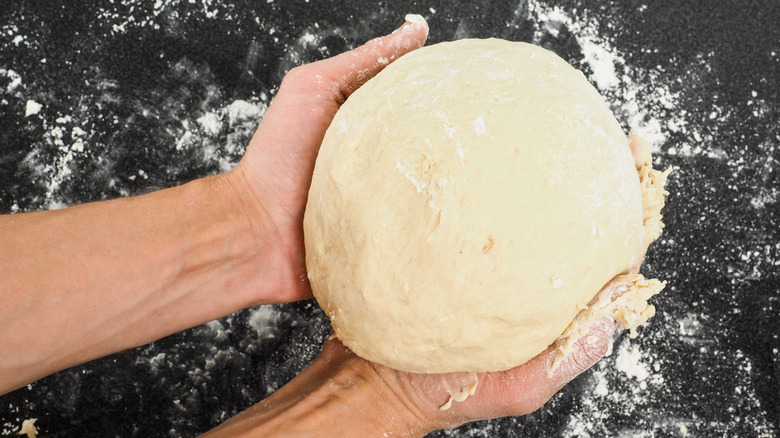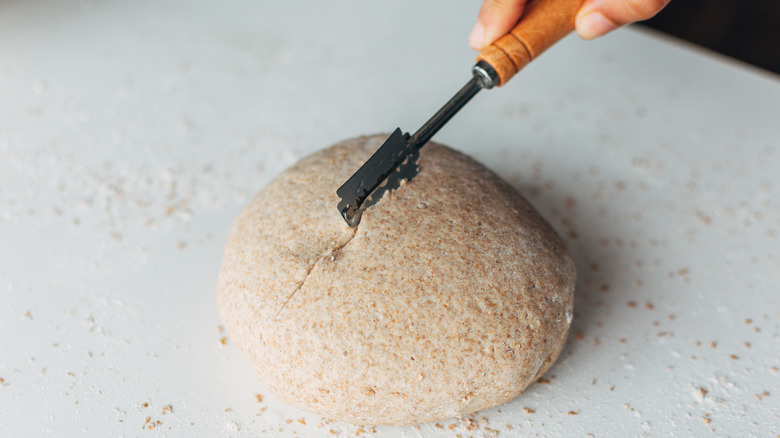An Easy Way To Tell Your Bread Dough Is Over-Proofed
One of the most important steps in bread baking is the rise — which is funny because it's also the most passive. Also known as proofing, this is the step before baking where the bread dough is left out to ferment, causing the dough to expand. As that's happening, the yeast is doing all the work for you. It feeds on the sugars and starches in the dough to produce carbon dioxide, and the resulting bubbles stretch the gluten in your dough to create a fluffy, pillowy texture. But, if left for too long, your dough will run out of gas and fall flat.
Most breads you bake will go through multiple proofs, in which case the poke test is normally used to tell you if it's done. With this method, it's pretty easy to tell whether or not your bread is done proofing or if it's not proofed enough — just by whether or not the bread bounces back. But, how do you know if your bread dough has been over-proofed? And what do you do if it is? If anybody can tell you, it's Nathan Myhrvold, the founder of Modernist Cuisine and the co-author of "Modernist Bread at Home."
As he explained to Tasting Table, "Properly proofed dough is fragile and must be treated delicately to preserve as many gas bubbles as possible. Over-proofed is even more fragile, which makes it difficult to score and more likely to snag when you run the blade of lame over it."
What to do with over-proofed dough
After you try to score your bread dough and find it's over-proofed, you can always reshape it and try letting it rise again. However, this will only work if you're using an active dry or instant yeast — and do note that it's going to rise even faster than it did the time before. So it's probably not a bad idea to set a timer to remind yourself to check on it every 15 to 20 minutes. Once it's risen about an inch over the pan and no more, give it a nice poke. If the indent stays, it'll be ready to perfectly score and bake.
Now, if you're baking with a sourdough starter or somehow over-proof your dough again, all hope isn't lost. You can always deflate the dough, throw it in a ziplock bag, and reshape it another day when you're craving a flatbread or pizza crust. It'll last at room temperature for up to three days and can be kept in the freezer for a few months. While it might not rise, over-proofed dough can be used in any of your sourdough discard recipes to give anything from your pancakes to your chocolate chip cookies a nice, ever-so-slight tang.
If you're reading this after you baked your bread you still have options. Take that sad, deflated-looking loaf and turn it into homemade bread crumbs or croutons, or take it as your sign to make French toast in the morning.

